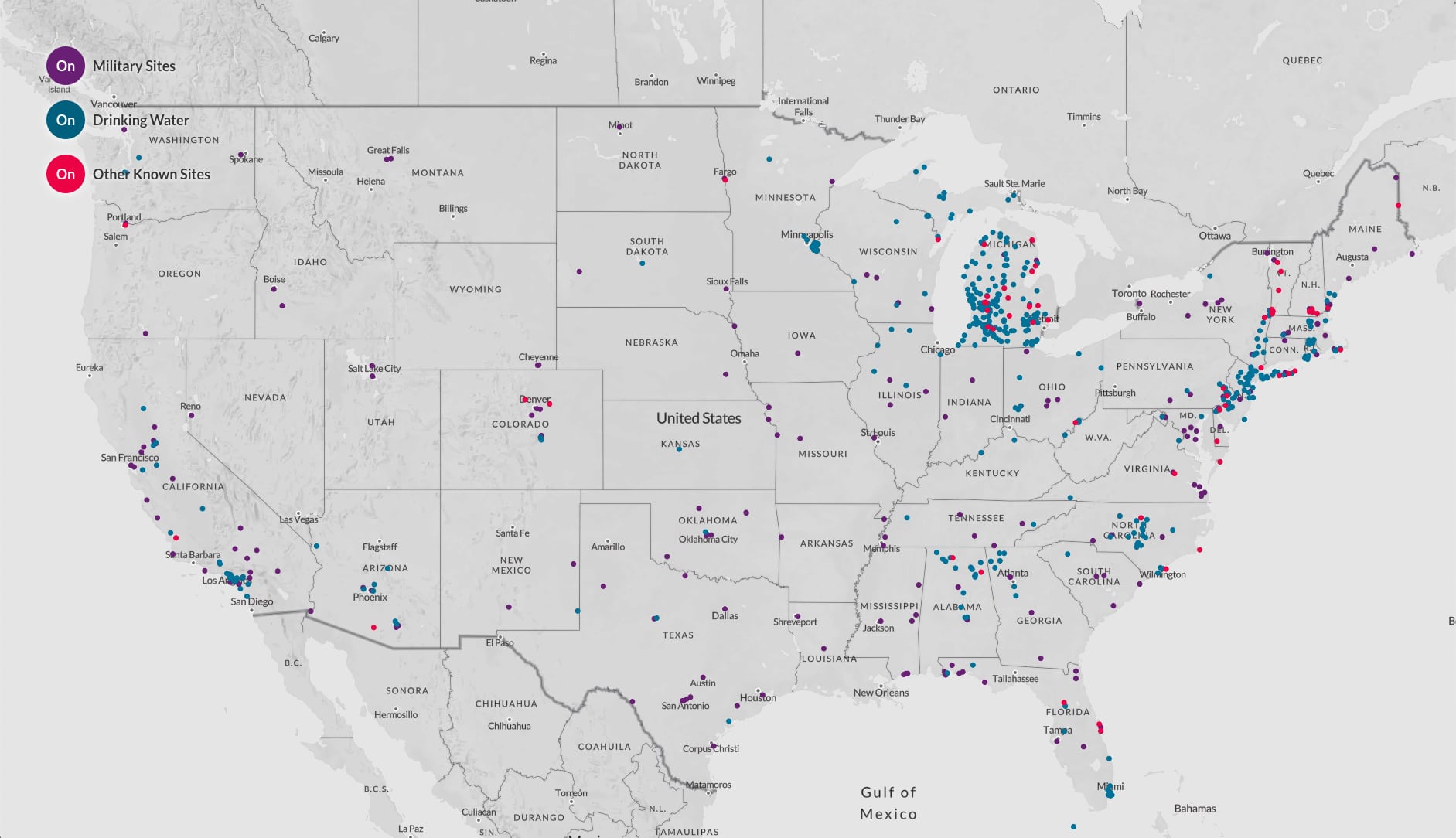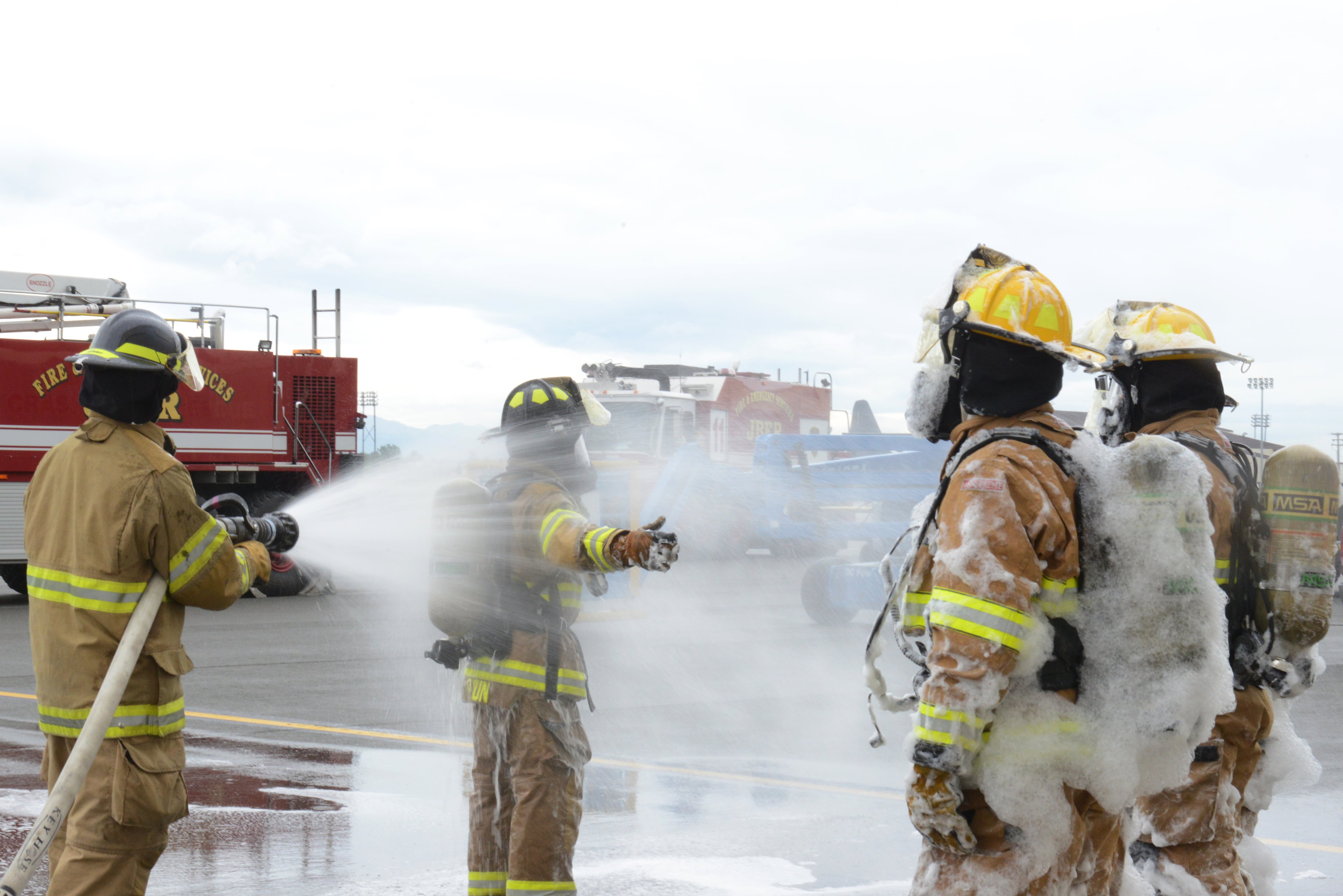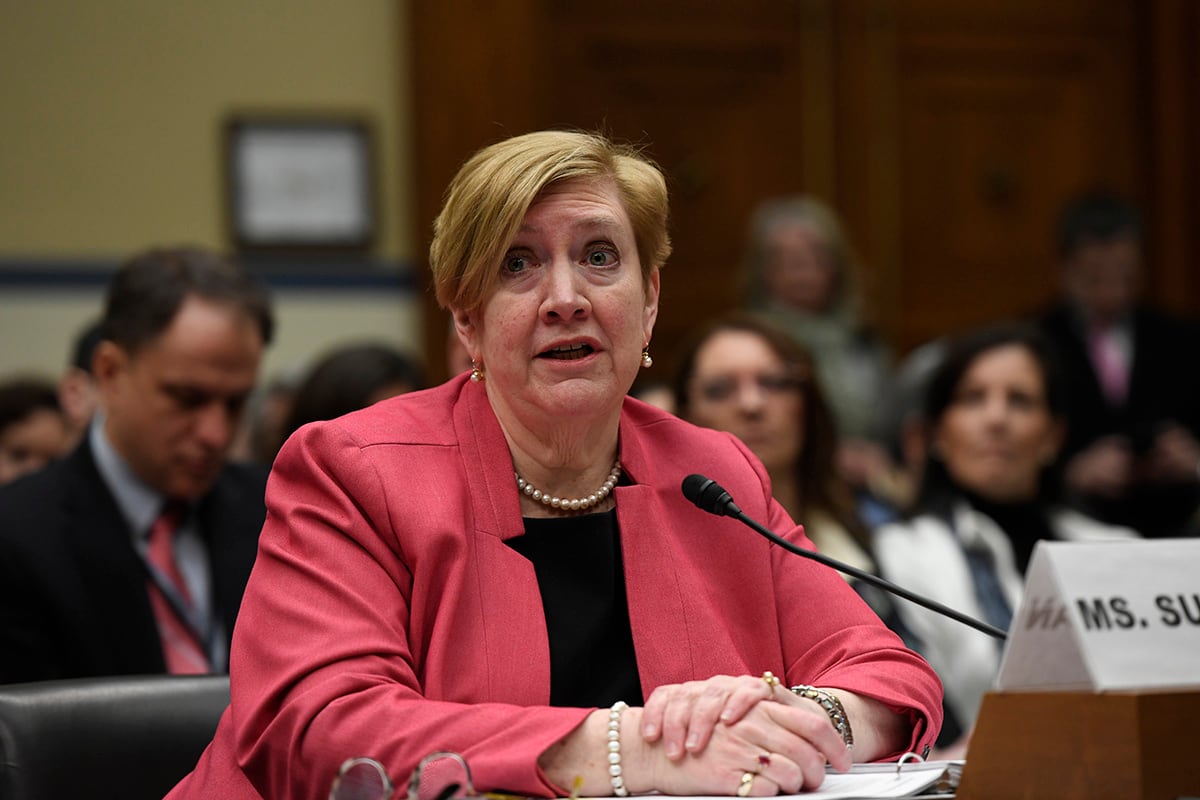An environmental advocacy group has identified 58 more military sites where levels of harmful chemicals used in firefighting foam have been detected in groundwater or drinking water sources, from Elmendorf Air Force Base and Fort Richardson, Alaska to Fort Eustis, Virginia.
This brings the total to 175 military installations and sites nationwide that are known to be contaminated by fluorinated compounds known as PFAS, according to the Environmental Working Group. An additional 44 civilian airports are included that are also used by Air National Guard units.
The advocacy group’s interactive map of all the sites includes information about the contamination in drinking water and groundwater. Many of the new sites reported relatively high PFAS levels — greater than 100,000 parts per trillion. Service members and military families can click on the interactive map to find the levels of contamination in a particular area, based on EWG’s research using DoD and other data. These sites were previously identified by military officials.
“The EPA and the Department of Defense have utterly failed to treat PFAS contamination as a crisis demanding swift and decisive action,” said Ken Cook, president of EWG, in a statement announcing the discovery of the additional sites.
“It’s time for Congress to end new PFAS pollution and clean up legacy contamination,” Cook said.
RELATED

A 2016 Environmental Protection Agency health advisory recommended water sources contain no more than 70 parts per trillion, or ppt, of the PFAS chemicals perfluorooctanoic acid, or PFOA, and/or perfluorooctane sulfonate, or PFOS at sites being addressed, including those under federal cleanup programs.
The PFOA and PFOS are the two most well-known of the hundreds of PFAS chemicals currently in use.
While the EPA’s health advisory has been in effect since 2016, neither the Pentagon nor any municipality was required to meet the 70 ppt standard because the contamination limit is an advisory, not a requirement.
For decades, the military used firefighting foams that contained PFAS chemicals. These per- and polyfluoroalkyl substances are also found in hundreds of everyday household products. PFAS chemicals have been linked to cancers and other health problems.

DoD officials have identified more than double the amount of sites identified by EWG, as having known or suspected release of these chemicals. DoD and service officials are prioritizing these 401 sites for cleanup, said Deborah Morefield, manager of the Defense Environmental Restoration Program in the office of the deputy assistant secretary of defense for environment, during a recent presentation at the national summit of the Association of Defense Communities.
Officials use the cleanup process under a law known as the Comprehensive Environmental Response, Compensation and Liability Act, or CERCLA, she said. “It’s a long process, and it doesn’t happen overnight.”
Under DoD policy, the military is no longer using firefighting foam that contains these chemicals for maintenance, testing or training, Morefield said. It’s only being used for real fire emergencies, and even in those cases, “we’re treating it as a spill response. We’re collecting and trying to make sure it doesn’t get into the environment further,” she said.
RELATED

Firefighters need these firefighting foams to be able to extinguish these fires extremely quickly, because often times the fires are in close quarters, with military personnel, munitions, buildings and expensive aircraft, she said. Officials are looking for safer alternatives that can put out fires quickly enough to save lives and property.
These firefighting foams are still used more on Navy ships because of the close quarters of personnel, munitions and aircraft, she said.
The firefighting foams were developed in the 1960s by the Naval Research Laboratory with 3M, on the heels of the fire on the aircraft carrier Forrestal, said Richard G. Mach Jr., director of environmental compliance and restoration policy, in the office of the deputy assistant secretary of the Navy for environment. The fire killed 134 sailors and airmen and 161 more were injured. “We needed to have an effective firefighting agent that could put out fires quickly, in close proximity to munitions, not sink our ships, not kill our people,” he said, at the ADC summit.
“It’s really, really effective in quickly knocking down and putting down a fire, having that film blanket over the top of the fire, which prevents the vapors from coming up and reigniting, and it also has the cooling effect of the water that’s in there,” he said. He noted that a change in specifications in 2017 put a limitation on the amount of the chemicals that can be used in the foam, which is the lowest currently available from laboratories; the Navy is also working to further lower the concentration.
RELATED

Congress has been providing additional money to address the cleanups, Morefield said. “We are trying to get our hands on this, trying to make sure we get the appropriate funding to move forward to take care of our cleanup responsibilities.”
In addition, DoD and the services are working to find alternatives to foams with these chemicals, currently funding about 80 projects, at a cost of about $10 million a year, she said. They’ve been evaluating some fluorine-free foams against military specifications to see if they meet the time requirements and other specifications to put out the fires, Morefield said.
Karen has covered military families, quality of life and consumer issues for Military Times for more than 30 years, and is co-author of a chapter on media coverage of military families in the book "A Battle Plan for Supporting Military Families." She previously worked for newspapers in Guam, Norfolk, Jacksonville, Fla., and Athens, Ga.





